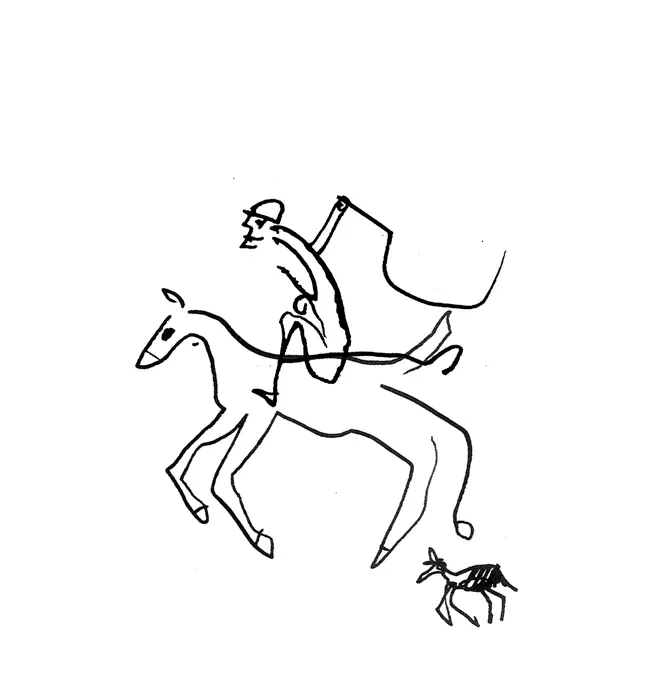The lyrical Kafka, the sensual, the humorous, the political, the class-conscious, the allegorical…, all the facets of the Czech writer, including the most unexpected, have a place in his 'Complete Stories', which has just been published by Páginas de Espuma to commemorate the centenary of his birth. The figure of Franz Kafka (Prague, 1883-Vienna, 1924) carries many myths, some of them unfounded. Considered an impenetrable and dark narrator, the present compilation demonstrates that the Prague narrator offers a somewhat brighter side that perhaps has not yet been sufficiently highlighted. He has no shortage of reasons to endure a dull existence: he put together his work in just 12 years, and during that time he endured a world war and tuberculosis, without prejudice to fulfilling the tasks of a diligent office worker.
With a prologue by Andrés Neuman, translation and editing by Alberto Gordo and illustrations by Arturo Garrido, the volume includes all the short fiction of the father of 'The Metamorphosis'. A timely opportunity to rediscover from famous stories, such as 'A Rural Doctor', to the almost unknown 'Description of a Struggle', the first story he wrote, a text that took him seven years to produce and where it appears for the last and first time. your natal city.
«Every classic needs an updated and contemporary translation. The Spanish language is changing and some current translations have been around for a few decades. But also the editing criteria vary,” says the editor of Páginas de Espuma, Juan Casamayor, who has enjoyed the unspeakable venturing into the Israel Library to observe the manuscripts of the Jewish prose writer. Some pages written in Kafka's handwriting appear reproduced in the book, accompanied by black ink drawings by Garrido, which evoke the writer's graphic work, full of restlessness.
The figure of Kafka is more relevant than ever and is closer than “the epic overactings of Hemingway or Henry Miller”, to mention two cases that move in the antipodes of the Czech author, according to Andrés Neuman, who considers that pouring into Spanish every certain time the work of a writer should never be considered a betrayal. “The greatest act of love that can be done to a classic is to reread it from the grammar of its time, and that undoubtedly includes its translation,” says Neuman.
Black mood
The vision that has coagulated of Kafka pales the multiple faces of a fruitful writer. «There is a subtly humorous Kafka who is much more reserved than the image of him might lead us to think. He often cultivates a black humor that is a supreme form of humor. There is also a Kafka with class consciousness, a Kafka who worries about the working conditions of workers and a Kafka who rethinks authority and the relationship with hierarchy, both in the figure of the father and the boss. Kafka is much more political than we have wanted to remember.
For Alberto Gordo, 1912 was the year in which Kafka's artistic emergence took place, “a prodigious year for universal literature because he wrote stories such as 'La Condemnation', 'El Fogonero', which would later be configured as the first chapter of 'America', and 'The Transformation'”, known by almost everyone as 'The Metamorphosis', although the author never mentioned this word in his story.
In this selection of texts, prose and autobiographical works are excluded, as well as his three novels: 'The Trial', 'The Castle' and 'The Disappeared', also called 'America', a title coined by Max Brod, the friend of writer who happily avoided throwing all his manuscripts into the fire, as the narrator requested before his death. Not only did Brod not destroy them, but he traveled with them to Palestine in 1939 and contributed to the publication of their masterpieces. Apart from his stories, the volume incorporates his aphorisms, written when he was suffering from tuberculosis,
Drawing by Arturo Garrido to illustrate Kafka's story 'There Was a Vulture'.
Andrés Neuman denies that Kafka is a writer above all of abstractions. It is true that it is, but it is no less true that Kafka dedicated many pages to the body, the pain that his physique inflicted on him and the fatigue he endured. «Kafka once confesses that he couldn't get out of bed, which is what happens to Gregorio Samsa», the character who one day wakes up turned into a horrible insect. «We cannot forget Kafka's work – Kafkaesque if ever there was one – in an insurance company for work accidents. “Kafka became an expert on bodies violated by work.”
Neuman, apart from the stories, is fascinated by his diaries, which sometimes contain stories in themselves. His diaries, in any case, are key to undertaking the reading of his work of fiction, as Borges already pointed out. Much of his writing remained unpublished during his lifetime due to the prose writer's unhealthy insecurity. “It's tragically funny that one of the most insecure authors in history was involved in insurance policies,” Neuman says.

Drawing by Arturo Garrido for the book 'Franz Kafka. Complete stories'.
The book, which combines philological rigor and literary interest, is accompanied by illustrations by Arturo Garrido. The artist has been inspired by the sketchy and disturbing style of Kafka's own drawings. “They are the graphic representation of his creative universe,” says Garrido.
Páginas de Espuma has proven experience in publishing the complete works of short fiction classics. He has delivered to print the stories of Edgar Allan Poe, Guy de Maupassant and Anton Chekhov, among others. At the end of the year, the publishing house will publish the stories of Joseph Roth, it will translate Poe again, for which it will dispense with the version signed by Julio Cortázar, and in 2025 it will bet on the stories of Ray Bradbury.
#Kafka #storyteller #thousand #faces #truth